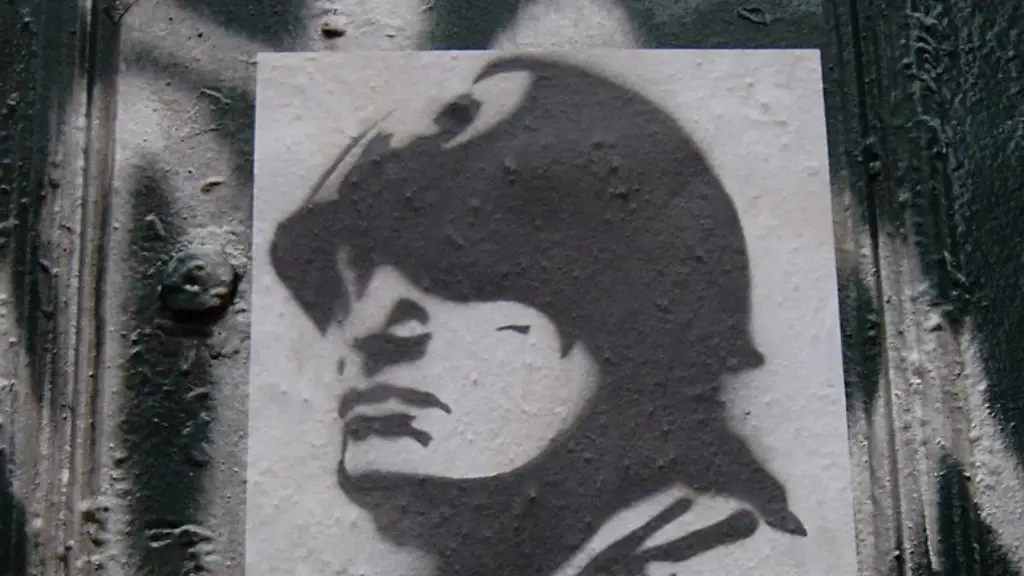Background
Muammar Gaddafi was a Libyan revolutionary, politician and political theorist, who served as the leader of Libya for more than 40 years, from 1969 until 2011. He was the de facto ruler of the Libyan Arab Republic from 1969 to 1977 and then served as the ‘Brotherly Leader’ of the Great Socialist People’s Libyan Arab Jamahiriya from 1977 until 2011. Gaddafi came to power through an military coup he orchestrated in 1969, overthrowing the monarchy of the Kingdom of Libya.
Lead Up To His Coming To Power
The Kingdom of Libya had been formed in 1951, when the UN arranged for four regions of colonial Italian Libya to be brought together as a single kingdom, under the rule of king Idris. However, although the monarchy was widely accepted by all ethnicities, much of the country’s population was unhappy with the lack of democracy and with the way the country’s resources were distributed. In the late 1960s, a group of radical Libyan army officers calling themselves ‘Free Officers’, of whom Gaddafi was one, organized a coup against the monarchy. On the 1st of September 1969, the officers led by Muammar Gaddafi overthrew King Idris and declared the establishment of the Libyan Arab Republic.
Gaddafi’s Rise To Power
Gaddafi had initially envisioned the ‘Free Officers’ as a group who would act as guardians of a liberal democracy, and even wrote his own manifesto titled ‘The Green Book’ which outlined his vision for a classless and stateless society. However, he soon decided to abandon those ideals and seize control for himself. He declared himself Chairman of the Revolutionary Command Council, a position which gave him total control over the military and the government. Gaddafi soon began to implement his own policies, such as land reform and nationalisation of the oil industry, and was able to maintain his grip on power through a combination of political repression, military force and sheer charisma.
Gaddafi’s Lasting Legacy
Gaddafi’s legacy is one of oppression and human rights abuses, but also of economic reforms and ambitious projects. During his time in power, he undertook huge infrastructure projects, such as the Great Man-Made River Project, a massive underground irrigation project that brought water to desert areas, and several pan-African projects such as the African Union. He also reversed many of the unpopular laws from the monarchy, and implemented sweeping reforms such as modernising the legal system and providing universal healthcare and education to all citizens of Libya.
The Legacy of Gaddafi’s Departure
Gaddafi was eventually driven from power after the Arab Spring revolution of 2011. After months of massive peaceful protests, he was eventually overthrown following a NATO-led military intervention. In the aftermath of Gaddafi’s ousting, Libya has become a deeply unstable and chaotic country. The ongoing civil war has caused massive destruction and displacement, while Gaddafi’s former loyalists have vowed to reclaim their former leader’s legacy.
Impact Of Gaddafi’s Rule On Libya
Gaddafi’s rule brought Libya immense economic growth, but at a huge cost to human rights and political stability. Though he brought many reforms that helped the people, he also repressed any opposition, made constant attempts to manipulate the international system for his own gain, and engaged in numerous human rights abuses. It is this legacy that has made it difficult for Libya to move forward and heal from the damage caused by the civil war.
Impact On The Region
The legacy of Gaddafi extends beyond Libya’s borders. His role in the 2011 revolution has been seen as a factor in the spread of Arab Spring unrest throughout the Middle East, with protests leading to regime changes in nations such as Syria, Yemen and Egypt. Muammar Gaddafi was a force to be reckoned with, and his legacy continues to impact the region even after his death.
International Reactions To Gaddafi
Gaddafi’s international image was a complicated one. Western governments, particularly the US and Britain, were initially supportive of him and saw him as a reliable ally, but his increasing repressive tactics and attempts at influencing international events saw them gradually turn against him. Other nations, such as South Africa and India, saw him as a champion of the developing world and recognized his attempts at implementing reforms in his own nation.
Analysis of Gaddafi’s Leadership
Gaddafi’s leadership style was one that combined elements of autocracy, populism and totalitarianism. He was extremely repressive with regards to his political opponents and made use of state-wide surveillance to further solidify his hold on power. However, he also implemented several reforms that improved the lives of many of his citizens, such as providing universal healthcare and education. These measures earned him the loyalty of many of his citizens, but also meant that he had created a personality cult around himself that was extremely difficult to break.
The Legacy of Muammar Gaddafi
Muammar Gaddafi was a controversial figure in life, and his legacy remains a contentious issue even after his death. His rule saw great economic growth and development, but at the same time brought immense human suffering, political repression, and international instability. His leadership style and approach to power will likely remain a lesson to future generations of leaders, a reminder of both the successes and the consequences of unrestrained power.

